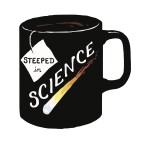I just read a great book about glaciers! There’s so much I want to sort through in here.
The book is by Jorge Taillant, who is a glacier activist in Argentina. He was involved in the process of the passing of the first glacier protection law in the world. Right now in Argentina, it is mining that is the greatest threat to glaciers, rather than global warming, although warming is not far from anyone’s mind when they talk about glaciers. So I learned a lot about ice and glaciers (rock glaciers, active and inactive glaciers, all kinds of glaciers) and a lot about politics in Argentina, both of which were interesting to me. It turns out that we as humanity are still learning about what glaciers do for us, just when we’re in danger of losing them altogether. Taillant thinks we should stop just wringing our hands about this and do something. I confess I was previously in the camp who thought that there was nothing we could do, other than work to reduce greenhouse gas emissions. Evidently there are some steps that can be taken specifically to protect glaciers.

Screenshot from the author’s guided tour of Argentinian glaciers on Google Earth. Glaciers are circled in blue, and the road is red.
This story was intriguing, with the surprising ins outs ups downs of Argentinian politics, and the relationships between governments, mining companies, and environmental agencies. At first I thought the political story would be quite boring, since I’m more interested in science than politics in general, but then there were some jaw-dropping moments that hooked me. But I think the real message here is about glaciers and glacier education. Taillant handles the science really well, using metaphors to explain the motion of rocks and ice and proposing home experiments. He also includes ways to look things up on Google Earth, a feature that at first I ignored but eventually got too tempting to bypass. Having Google Earth up on my computer made the experience much more amazing (but slower reading).
So I loved this book. But I will warn that it is written by an activist, and so the text is definitely biased. There are more exclamation points and italicized words than in most science-related books, and some corny story-telling tricks (or so they thought). But the enthusiasm of the author is forgiveable and contagious. I learned a lot and wanted to learn more, so I think his goal of educating the public and spreading the word as far as I’m concerned.
I got an early print of this book from NetGalley, so I may have to wait a while to discuss it with someone. ..



Leave a Comment
You must be logged in to post a comment.